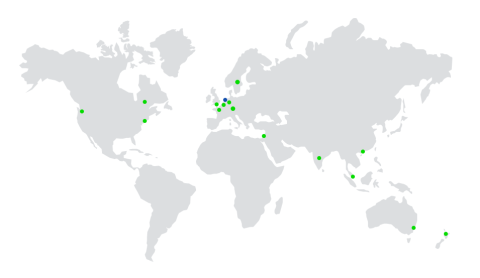
In the modern business world, we expect everything to be digital and connected. Therefore, it’s critical that service providers are equipped with the right tools to automate their operations.
For many facility management service providers, embracing technology and digitalizing their business is nothing new. However, it’s becoming more and more critical to automate complex operations. In order to optimize maintenance management processes, there are three key questions that service providers could ask themselves:
1. What do we offer?
2. Who are our clients?
3. Who does the work?
The answers to these questions will help service providers define the next steps towards a digitalized and automated maintenance process. This ultimately creates efficiencies, saves resources, increases customer satisfaction, and encourages business innovation. Let’s take a closer look at each of these three questions:
What do we offer?
Most service providers have a list of their offerings with standard pricing. However, in practice, this can vary widely. Do you have standard packages for reactive maintenance, planned maintenance, cleaning, and other services? Also, how often do you need to combine these offerings, resulting in custom-made pricing?
When details of these services are stored in a central location, it becomes easier to create proposals, benchmark customer projects, drive the efficiency of your service delivery and offer transparency to your customers.
Who are our clients?
When onboarding a new client, a service provider often needs to assess their properties, upload BIM and CAD drawings, and collect all sorts of information about the client. This client will also have their own unique contract, which can result in specific requirements. Therefore, there are two types of information from clients you should consider:
- Client facility information: how many buildings, spaces, assets and available sensors, does your client have? Also, what condition are they in? This information can then be combined with your best practices and generic offerings in order to create the optimal maintenance regime.
- Client contract information: What is included in the contract, what is not? Are there different rates for rush projects or non-contract work? What are the terms (both financial as well as procedural) you agreed on with the customer?
By taking this information into consideration, the system can help you in various ways throughout the entire process. For example, it can help define whether you need to make a proposal before starting work, and depending on the type of work; whether the expected costs are above a certain threshold or even included in the existing contract. It can also help in calculating the rate for different types of work and travel time or execution outside working hours. This helps you to automatically invoice the correct amount for work performed based on agreed upon rates.
Who does the work?
Finally, you also need to fully understand who performs the work you have been contracted to deliver. Service providers rely on a delicate balance of their own employees and subcontractors to provide these services.
- Your own employees: Keeping track of your employee base, including their availability and skill sets, can be challenging at times for service providers. To answer this question more effectively, you need to know what experience and certifications your skilled labor has, who is still in training, who the experts are, what working schedules people are available for and when they are on vacation.
- Subcontractors: Due to the variety of business partnerships that exist, managing subcontractors can be just as complicated as managing your own employees. For your subcontractors, you will want to know their rates, availability, response times, and specializations.
Inputting this information into a resource scheduling tool powered by Artificial Intelligence allows it to automatically assign employees and subcontractors based on skills, availability, route and contract rates.
Putting it all together
Consider the benefits of one software platform with all this information – a software platform that centralizes the relationships and contracts you have with customers. It can help digitalize your maintenance efforts by automating the creation of proposals, assignment of work, and invoicing processes.
Planon Universe for Service Providers includes best practice workflows for maintenance management and other processes. The true innovation and automation come from having all the base information included in an integrated software platform. From this starting point, each service provider can use their own proprietary business processes.




















